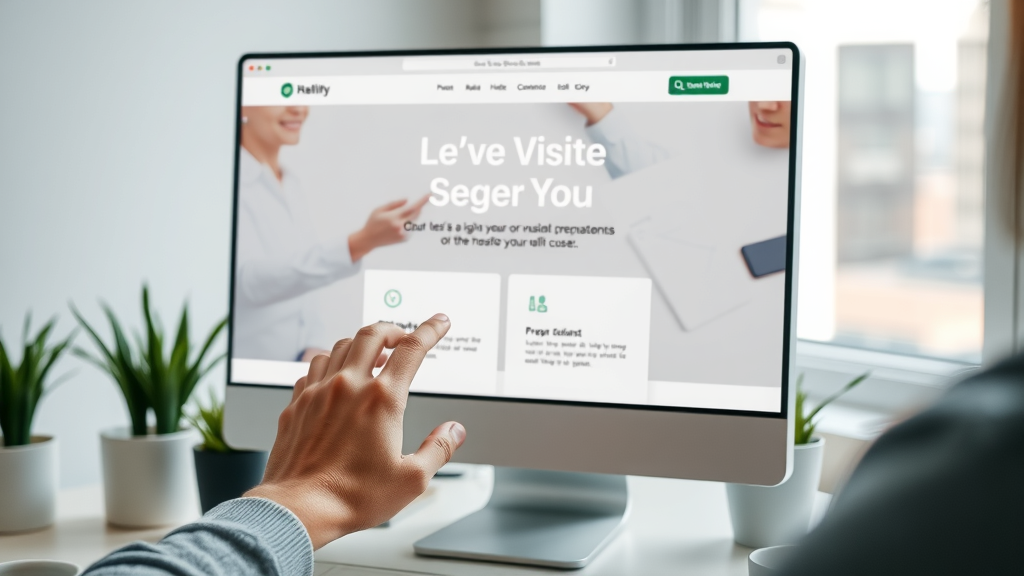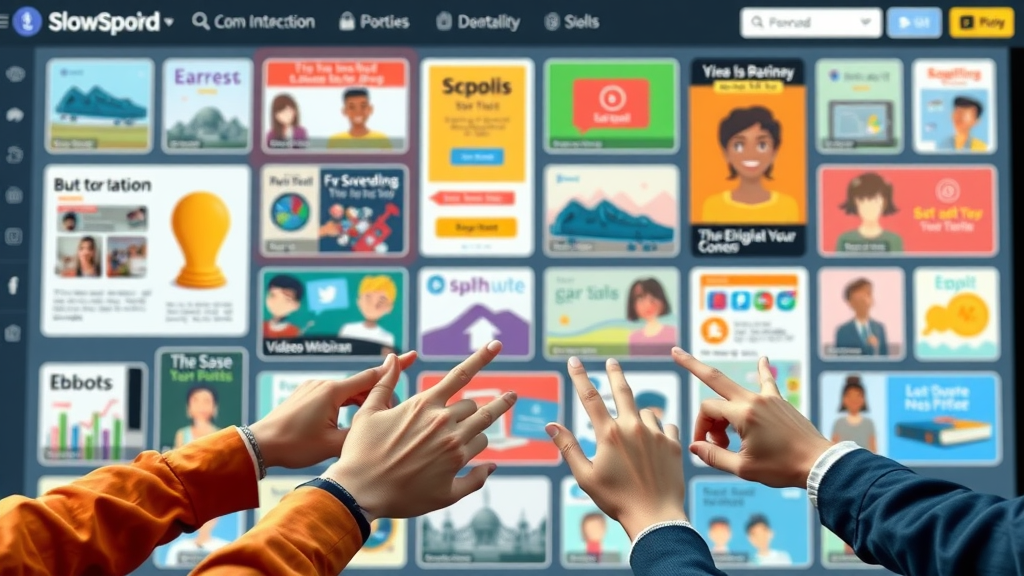Did you know that over 70% of marketers say content marketing for leads delivers more conversions than paid strategies? In today’s digital landscape, earning quality leads isn’t just about spending big on ads—it’s about building trust, delivering valuable insights, and showing up for your audience at every turn. This comprehensive guide will reveal why content is king for lead generation, the step-by-step strategies the pros use, and the proven formats for attracting and nurturing qualified leads. If you’re ready to move beyond chasing clicks to attracting real, engaged prospects, read on to transform your marketing strategy.
Unlocking High-Quality Leads through Content Marketing for Leads

Content marketing for leads isn’t just an industry buzzword—it's a fundamental shift in how businesses generate leads and drive growth. Traditional marketing efforts might grab attention, but modern buyers expect more: educational resources, genuine problem-solving, and content that’s tailored to their pain points and needs. By leveraging content marketing, companies can create a pipeline of high-quality leads that are not only interested but already warming to the brand before a sales conversation even begins.
High-quality leads are the lifeblood of successful lead gen campaigns. With a content marketing strategy that focuses on providing quality content throughout the customer journey, you attract potential customers who are likely to convert into loyal clients. The shift from broadcasting sales messages to nurturing audiences with blog posts, landing pages, guides, and valuable resources has elevated content marketing as a prime driver of lead generation success.
A Surprising Truth: Over 70% of Marketers Say Content Marketing for Leads Drives More Conversions Than Paid Strategies
According to recent surveys, more than 70% of marketers agree that content marketing produces better results when it comes to lead generation and conversion rates compared to paid advertising. This fact underscores the growing importance of building authority, trust, and engagement—essential qualities that set content-driven marketing efforts apart from the competition. By addressing potential customer pain points with valuable content, businesses are seeing higher conversion rates and improved ROI from their marketing strategies.
- Understanding step-by-step content marketing strategies for lead gen
- Insights into the best types of content for lead generation
- How to align the customer journey with effective content marketing
- Proven marketing strategies to reliably generate leads
- Practical templates and expert quotes on content marketing strategy
- Data-driven answers to FAQs about content marketing for leads
Why Content Marketing for Leads is Essential for Lead Generation Success
The Relationship Between Content Marketing and Lead Gen

The synergy between content marketing and lead gen lies in how content addresses the informational needs and pain points of your target audience across different stages of the buyer journey. By publishing quality content, such as blog posts and guides, potential customers are drawn to you through organic search, social media, and peer sharing. This organic pull creates more opportunities for lead capture, reducing the reliance on intrusive ads and cold outreach.
The essence of effective lead generation is delivering relevant content at the right time—content that not only educates but also guides prospects toward a conversion event, such as signing up for a webinar or downloading an eBook. Strategically mapping this content against each funnel stage ensures that you’re not just attracting leads, but moving them smoothly from being potential customers to qualified leads ready for a deeper engagement.
Marketing Strategy: How Content Marketing Strategy Sets the Foundation for Effective Lead Generation
Every successful lead generation campaign starts with a well-defined content marketing strategy . This blueprint outlines the topics, types of content, publishing cadence, and distribution channels that will attract your target audience and nurture them toward conversion. By deeply understanding your audience’s pain points, you can create blog posts, landing pages, and email marketing campaigns that directly address their needs and demonstrate your brand’s expertise.
The key is consistency and alignment: regularly producing relevant content, ensuring that each piece is optimized for both search engines and user experience, and executing a strategy that evolves with market trends and analytics. Content marketing strategies that prioritize audience research, data-driven creation, and ongoing optimization consistently outperform those that operate on gut feeling or arbitrary publication schedules.
Expert Opinions on Content Marketing for Leads – Why Brands Prioritize Lead Generation
Industry experts universally recognize the transformative power of content marketing in lead generation. Their top advice? Make every piece of content an opportunity to educate and earn trust. "Content marketing costs 62% less than traditional marketing and generates about 3 times as many leads," according to the Content Marketing Institute. Thought leaders also highlight the importance of measuring what matters—tracking not just traffic or clicks, but the quality of leads and the impact of specific content formats on actual conversions.
"Content marketing costs 62% less than traditional marketing and generates about 3 times as many leads." – Content Marketing Institute
Core Elements of an Impactful Content Marketing Strategy for Leads
Defining Your Target Audience for Content Marketing Lead Gen

The foundation of effective content marketing for leads is a precise understanding of your target audience . Identifying who your potential customers are—what they care about, which pain points they’re experiencing, and how they consume content—shapes every aspect of your strategy. Begin by developing detailed personas with demographic, psychographic, and behavioral data. Analyzing your audience helps you create content that builds rapport and speaks directly to their unique challenges.
Beyond basic demographics, use tools like audience interviews, competitor analysis, and analytics from previous content marketing efforts to understand what type of quality content your audience values most. This research-driven approach ensures you’re not making assumptions, but instead, crafting messages and offers that are truly compelling—resulting in higher engagement and more qualified leads .
Creating Quality Content That Converts Leads
Not all content formats are created equal when it comes to lead gen . High-performing blog posts, gated eBooks, case studies, and webinars all have the power to educate, engage, and convert potential customers. Quality content addresses real pain points, provides actionable solutions, and incorporates persuasive calls-to-action that move readers further along the conversion funnel.
Use storytelling, data-driven insights, and tangible results to prove your expertise and value. Each piece of content should be optimized for both search and user intent—meaning, use keywords naturally, include clear next steps, and format your blog posts or landing pages for maximum readability. The ultimate goal? Create a resource library so valuable your prospects keep returning—and eventually, convert.
Mapping Content Types to Every Stage of the Customer Journey
An impactful content marketing strategy aligns different types of content with each stage of the customer journey . Awareness-stage blog posts or videos introduce concepts and capture the attention of new prospective leads. Consideration-stage guides, webinars, and comparison sheets help nurture interest and address specific pain points. Decision-stage landing pages and case studies seal the deal, converting engaged users into leads or even customers.
Mapping your content in this way ensures no prospect falls through the cracks. For example, top-of-funnel SEO guides may attract wide audiences, while mid-funnel email marketing nurtures and educates, and bottom-of-funnel landing pages convert leads into paying clients. Regularly auditing your content allows for optimization and expansion where you see engagement—and ultimately, conversions—happening.
| Content Type | Best Use Case in Lead Generation | Example |
|---|---|---|
| Blog Posts | Educating top-of-funnel audiences | SEO Guides |
| Landing Pages | Capturing contact information | Free eBook Offer |
| Email Marketing | Nurturing and converting leads | Automated Drip Sequence |
The Role of Landing Pages in Content Marketing for Leads
A landing page is often the pivotal conversion point in your lead generation campaign. Unlike general web pages, landing pages are laser-focused, presenting a single offer—think eBooks, webinars, or free consultations—and a compelling reason for prospects to exchange their contact details. Effective landing pages are crafted with persuasive copy, a strong call-to-action, and a design free from distractions.
- Relevant content offer
- Clear value proposition
- Persuasive copy
- Strong call-to-action
- Simple, distraction-free design

By ensuring your landing pages align with the content that drives visitors there—like a blog post or email sequence—you increase both engagement rates and conversions. Effective landing page optimization is all about testing: headlines, form lengths, offer positioning, and even button colors can dramatically impact your lead gen outcomes.
Proven Content Marketing Strategies to Generate Leads
Leveraging Blog Posts for Content Marketing Lead Generation

A strategic blog post does more than educate—it establishes credibility, attracts organic search traffic, and moves readers closer to becoming leads. High-performing blog posts for lead gen tackle the exact pain points of your target audience, answer burning questions, and end with actionable calls-to-action, such as downloadable resources or invitations to webinars.
To maximize your blog's lead generation power, conduct regular keyword research, update older posts with new data, and always link to relevant landing pages or lead magnets. Consider embedding forms or chatbot widgets directly in the post to capture interested readers in the moment. Consistency and value are key—the more relevant and practical your content, the more likely visitors are to convert into qualified leads .
Integrating Email Marketing with Your Content Marketing Lead Generation Campaign
Email marketing remains a cornerstone of nurturing quality leads. After capturing a prospect’s details through compelling landing pages or downloadable resources, nurture them through thoughtful, value-packed emails. Automated drip campaigns guide leads through the customer journey, delivering extra resources, personalized tips, and building the trust needed for conversion.
Effective email marketing doesn’t mean spamming inboxes. Instead, segment your audience by behavior or interest, send them highly relevant content formats, and always encourage the next step in your lead gen funnel. From welcome series to re-engagement campaigns, every touchpoint is an opportunity to move leads toward becoming delighted customers.
Content Strategy Adaptations for Niche Lead Gen

To drive results in specialized industries, adapt your content marketing strategy to the unique context, terminology, and buyer behaviors of your niche. For example, a healthcare technology company must address regulatory concerns, industry jargon, and precise use cases—requiring in-depth guides, expert interviews, and highly targeted blog posts.
Tailoring marketing strategies to niche markets means deep research and close communication with subject matter experts. Test and measure which types of content resonate—infographics, white papers, or comparison guides may each contribute to higher quality leads in different sectors. Ultimately, niche lead generation relies on both specialist knowledge and a keen focus on what makes each segment tick.
Valuable Content Distribution Channels for Lead Generation
Creating great content is just the first step. To generate leads consistently, leverage multiple content distribution channels: organic SEO, social media, targeted email outreach, guest blogging, and paid promotions all have roles to play. Each channel delivers its own strengths—social media offers reach and engagement, while gated content distributed by email can convert existing fans into leads.
Repurpose high-performing blog posts into infographics, short videos, or carousel posts. Use A/B testing to refine distribution on different platforms and focus on where your target audience spends time. Consistency, creative iteration, and cross-channel tracking are the secrets to maximizing content marketing ROI in your lead generation campaigns.
Step-by-Step Content Marketing Strategy Breakdown for Lead Gen
Building a foolproof content marketing for leads framework requires methodical planning:
- Define your target audience and build segmented personas.
- Map out the customer journey and align content formats with each stage.
- Create a content calendar featuring various blog posts, landing pages, and email marketing campaigns.
- Promote content across selected channels and track lead conversion rates.
- Iterate, update, and optimize based on ongoing analytics.
By following these steps, your content marketing strategy evolves from ad hoc creation to a robust, repeatable process designed to deliver high-quality leads month after month.
Real-World Examples of Effective Content Marketing Strategies for Lead Gen
Consider businesses that combine in-depth resources with interactive formats to deliver value and capture leads. For instance, SaaS companies might offer comprehensive guides about landing pages, while consulting agencies see leads soar through targeted webinars and insightful case studies. Quizzes and interactive lead magnets integrated within blog posts invite participation, and in exchange for valuable insights, prospects provide their details—fueling your marketing funnel.
- Comprehensive guides to landing pages
- Targeted webinars and case studies
- Interactive lead magnets
Which Types of Content Work Best for Content Marketing for Leads?
Choosing the Best Content Types for Lead Generation
The best-performing content for lead generation includes a mix of educational, actionable, and interactive formats. While blog posts educate and attract search traffic, it’s often gated content—like eBooks, webinars, and case studies—that persuade visitors to exchange their contact information for value. Landing pages serve as vital conversion points, while email marketing nurtures these leads to qualify and engage them further.

Choosing the right content format depends on your audience’s preferences and your business goals. Use analytics to identify which formats deliver the most conversions, and continuously test new approaches, from quizzes to multi-part email series, to find your top lead gen performers.
Using Quality Content to Build Trust and Attract Quality Leads
Trust is the bridge between interest and action. Quality content consistently answers the questions and addresses the concerns of your audience, signaling expertise and reliability. As stated by Andrew Davis, "Your content should build relationships. Relationships are built on trust. Trust drives leads and sales." Building trust through transparent, valuable content is the most sustainable way to attract high-quality leads.
"Your content should build relationships. Relationships are built on trust. Trust drives leads and sales." – Andrew Davis
When prospects view your brand as a helpful resource rather than a hard seller, they’re more likely to share their information and consider your solutions. Consistency, authenticity, and ongoing value are the keys to making your content marketing strategy a lead generation powerhouse.
- Blog posts
- Gated eBooks
- Webinars
- Case studies
- Email series
- Quizzes and assessments
- Landing pages
Optimizing Your Content Marketing Strategy for Quality Lead Generation
Tracking Metrics That Matter for Content Marketing Lead Gen

Successful content marketing for leads hinges on data-driven optimization. Track key metrics such as lead conversion rate, engagement rate on blog posts or landing pages, cost per lead, and the Marketing Qualified Lead (MQL) to Sales Qualified Lead (SQL) ratio. Monitoring these KPIs ensures your marketing efforts aren’t just generating traffic, but also delivering quality leads ready to progress through your sales funnel.
| Metric | Why It Matters for Lead Gen |
|---|---|
| Lead Conversion Rate | Measures effectiveness of your content |
| Engagement Rate | Quality of audience interaction |
| Cost per Lead | Cost efficiency of your content marketing |
| MQL to SQL Rate | Quality of leads generated |
Use analytics platforms to assess which content formats lead to the highest conversions and double-down on what works. Continually reviewing these metrics empowers you to refine your campaigns for even better results.
A/B Testing Content and Landing Pages for Maximum Leads
Even minor changes to your blog posts or landing pages can have outsized impacts on your lead gen results. Run A/B tests on elements like headlines, images, CTA buttons, and sign-up forms to see what drives the most engagement and conversions. Test one variable at a time for clear, actionable insights, and always let data—not assumptions—inform your content marketing strategy.
Regular testing ensures your tactics evolve with changing audience behaviors and market trends, giving you a consistent edge in attracting qualified leads. Document your learnings, iterate quickly, and apply successful elements across all your content formats for compounding gains.
Nurturing Quality Leads Beyond the Initial Conversion
Capturing a lead is only half the battle—the real opportunity lies in effective lead nurturing. Use a mix of educational email sequences, retargeting campaigns, and segmented content recommendations to deepen the relationship and guide leads toward a purchase decision. Mapping out nurturing workflows for each audience segment ensures your messages stay relevant and timely.
Consistent touchpoints, like follow-up resources or exclusive invites, help move leads down the funnel and convert more prospects into loyal customers. This post-conversion nurturing transforms one-off contacts into high-value, recurring buyers, further driving overall marketing ROI.
Building a Sustainable Content Marketing Pipeline for Ongoing Lead Generation

For businesses committed to long-term growth, building a repeatable, scalable content marketing pipeline is essential. Balance evergreen content, such as pillar blog posts and FAQs, with fresh pieces that capitalize on trending topics or evolving pain points. Automate as much as possible—email follow-ups, social scheduling, and regular audits—so you can stay ahead without burning out your team.
Regularly evaluate your funnel, identify bottlenecks, and experiment with new distribution or content formats to keep your lead generation efforts robust and adaptable in any marketing climate.
How to Optimize Blog Posts and Landing Pages for Content Marketing Lead Gen
Start with headline optimization: craft attention-grabbing yet specific titles that match user intent for content marketing for leads . Use relevant keywords naturally, add subheads for readability, and clarify your offer with concise, value-laden copy. Support blog posts with compelling images, bullet summaries, and clear CTAs leading to optimized landing pages.
On landing pages, reduce distractions—remove extra navigation, compress form fields to the essentials, and place testimonials or trust signals near your CTA. Test and refine every element based on real-world conversions and adjust your strategy as you uncover what resonates most with your highest quality leads.
People Also Ask: Answers on Content Marketing for Leads
How to use content marketing to generate leads?
Deliver valuable, relevant content at every stage of the funnel, using targeted blog posts, landing pages, and email marketing to build trust, educate, and capture leads with compelling calls-to-action.
What are the 3 C's of content marketing?
The 3 C's are Creation (producing valuable content), Curation (selecting and sharing third-party content), and Consistency (publishing regularly to build audience trust and support lead generation).
Which content type is best for generating leads?
Gated content such as eBooks, webinars, and interactive assessments often generate the highest number of quality leads, supported by blog posts and well-optimized landing pages.
What is the primary goal of content marketing in lead generation?
The primary goal is to attract, engage, and ultimately convert qualified prospects (quality leads) by aligning valuable content with their needs and ensuring a seamless customer journey.
Frequently Asked Questions About Content Marketing for Leads
What makes content marketing for leads more effective than traditional marketing?

Content marketing for leads allows brands to continuously engage, inform, and nurture audiences rather than relying on one-way messages. The long-term value from owned content—including SEO benefits, ongoing lead generation, and improved brand trust—far outperforms the fleeting impact of traditional ads, making it more cost-effective and sustainable for lead generation campaigns.
How can businesses personalize their content marketing strategies for diverse target audiences?
Personalization starts by segmenting your target audience and crafting messages for each group. Use data and buyer personas to tailor your blog posts, landing pages, and email marketing efforts. Dynamic content, personalized CTAs, and behavior-triggered workflows help maximize each recipient’s engagement and conversion potential.
How often should high-quality content be published for optimal lead generation?
Aim to publish high-quality content regularly—weekly or bi-weekly is ideal for most businesses. Consistency builds authority and trust over time, while high frequency without value can undermine your efforts. Focus on quality over quantity, ensuring each blog post, guide, or email delivers real value to your target audience.
What are the signs of a successful lead generation campaign using content marketing?
Key indicators include growing numbers of qualified leads, higher engagement rates on content, improved conversion rates on landing pages, and a healthy pipeline of new opportunities. A successful campaign also has measurable ROI, positive feedback from leads, and data revealing which content formats reliably generate results.
Expert Takeaways on Effective Content Marketing for Leads
"To generate real leads, content marketing must educate, inspire, and solve problems at every touchpoint." – Ann Handley
- Always begin with clear marketing strategy goals for lead gen
- Continuously refine your content marketing strategy based on metrics
- Choose a mix of blog posts, landing pages, and email marketing for lead generation
- Map the customer journey and align content to buyer intent
- Test and adapt your marketing strategies for the best lead generation results
Ready to Boost Your Lead Generation?
Schedule a Free Strategy Session Today! https://hub.prospectrocket.com/AR/eymcalendar
Take action now: Put these proven strategies to work and start capturing quality leads with powerful, purposeful content marketing.
To enhance your understanding of content marketing for lead generation, consider exploring the following resources:
-
“Content Marketing Strategies For Lead Generation” : This article delves into creating valuable long-form content that captures leads, offering practical examples and tips to implement in your strategy. ( slixta.com )
-
“8 Content Marketing Tactics that Boost Lead Generation” : This piece outlines effective content types and tactics, such as blog posts, eBooks, webinars, and case studies, to enhance your lead generation efforts. ( inboxinsight.com )
If you’re serious about leveraging content marketing to generate quality leads, these resources will provide you with actionable strategies and insights to optimize your approach.
 Add Row
Add Row  Add
Add 




Write A Comment